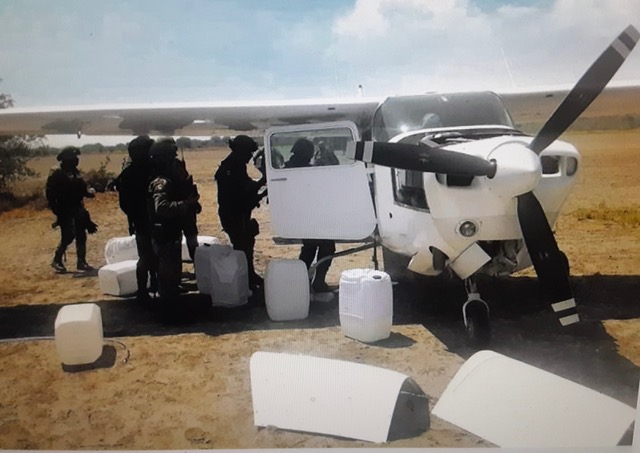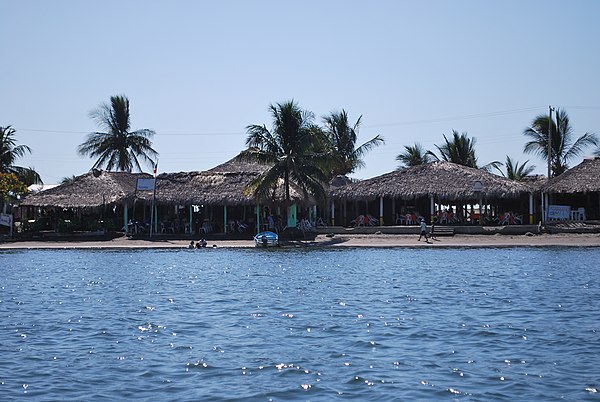
By: Alfredo Fuentes | El Sol de México
Organized crime groups that traffic drugs from Central America to Mexico and the United States use at least six routes that cross Chiapas by sea and land, indicate documents of the Secretary of National Defense [Sedena] that were consulted by El Sol de México after the Guacamaya leak1.
According to information in Sedena’s possession, the organized crime groups identified in the area —the Pacific Cartel, Los Huistas and the Cartel Jalisco Nueva Generación— and even Mara Salvatrucha take advantage of the almost 700 kilometers of border that Mexico and Guatemala share, through Chiapas, for the shipment of drugs, principally cocaine, which arrives in Tabasco, Veracruz and Oaxaca.
Regardless of the fact that three Military Zones operate in the state, drug traffickers have made their way through the state mainly by sea and land, since according to the document reviewed by this newspaper the security body has not identified air routes in Mexico.
Air Routes
It points out that in the municipalities of Chiapas there are no identified air routes, but there are small planes that travel from Central America and use the Caribbean Sea and the Pacific Ocean to traffic drugs to Guatemala, where they land near the border line with Mexico and then cross into the country using the so-called “ant traffic.”
Contrasting with this private intelligence report, the Sedena has reported on repeated occasions they have seized small planes loaded with drugs in Chiapas. Just yesterday, it reported the seizure of an aircraft carrying around 340 kilograms of cocaine from South America to Tres Picos, where it landed and was abandoned by a group of individuals who fled as soon as they became aware of the military presence.
Events like this occur relatively regularly. On September 1, the National Defense seized a small plane with 650 kilos of cocaine and dismantled an irregular airstrip; a month earlier, it seized 136 kilograms traveling from South America.
Land Routes
Despite these large seizures by air, Sedena details that the main method used by criminal groups to transport drugs remains land, with five main routes identified. In second place are sea routes, where one route has been identified.
The first land route, known as the Pacific route, crosses the entire lower part of the state, between the municipalities of Hidalgo, Tapachula, Huixtla, Mapastepec, Pijijiapan, Tonalá and Arriaga, a few kilometers from the 36th Military Zone.
On this route alone, between August 5 and October 8 of this year, the Army secured at least two thousand 195 kilograms of drugs in five different events, three of which involved small planes.
==

The central part of Chiapas is where most activity related to drug trafficking occurs, because there are three transfer routes, according to the documents of the Sedena, this despite the fact that there are two military zones, the 31 and the 39, in the surround area.
The first of them extends along the Comalapa Border, La Trinitaria, Comitán, Amatenango del Valle, Teopisca, San Cristóbal de las Casas, Chiapa de Corzo, Tuxtla Gutiérrez and flows into Ocozocoautla, Veracruz.
Another also begins in Frontera Comalapa, passes through La Trinitaria, Comitán, Tzimol, Las Rosas, Venustiano Carranza, Amatal, Chiapa de Corzo and Tuxtla Gutiérrez, to end up in Tapanatepec, Oaxaca. The last of these three central routes begins in San Cristóbal de las Casas, crosses San Juan Chamula, San Andés Larrainzar and Pueblo Nuevo Solistahuacán until it reaches Pichucalco, and then Tabasco.
Finally, the Army has located another road closer to the Gulf of Mexico and farther away from any of the three military bases in the state. This part of Benemérito de las Américas, continues in Ejido Chancalá, Francisco I. Madero, La Unión, Bajadas Grandes and Palenque until reaching Catazajá, and Tabasco.
==
Organized crime violence
The central area of Chiapas is where most organized crime violence has been recorded during the year. Between February 12 and September 20, there were at least 9 high-impact violent incidents including clashes, kidnappings and disappearances.
For example, on May 1, there were a series of clashes in the vicinity of San Gregorio Chamic [municipality of Frontera Comalapa], when personnel of the 101st Infantry Battalion that was patrolling the El Jocote-Quespala highway were intercepted and assaulted by alleged members of the Sinaloa Cartel under the command of Isidro Rivera alias El Chilo and Eddy El 90.

It also highlights the kidnapping of the commissioner of the Sinaloa ejido, in Frontera Comalapa, Rolando Rodríguez, who on September 20 went to ask for help from the soldiers due to the presence of organized crime, however, a group of armed men took him and he has not been seen again.
Sea route
Regarding the sea route, the Sedena points out that it departs from Guatemala and begins its journey in Mexico through the Ejidos El Gancho, Puerto Madero, Barra San Simón [Mazatán municipality], San José, Zacapulco, Boca del Cielo and Paredón to Salina Cruz, in Oaxaca.
On this route, Mexico’s Secretary of the Navy has carried out at least four large confiscations on boats of criminal groups between February and September, which added up to 2,535 kilos of drugs and 1,155 liters of fuel of illicit origin.
With information from Roberto Segoviano, Angeles Vargas and César Solís/ Diario del Sur and El Heraldo de Chiapas
Originally Published in Spanish by El Sol de México, Friday, October 14, 2022, https://www.elsoldemexico.com.mx/mexico/sociedad/guacamaya-leaks-narco-atraviesa-chiapas-con-droga-por-seis-rutas-9034253.html. English interpretation by the Chiapas Support Committee and re-posted by Schools for Chiapas.
Footnotes
- The Sedena documents are from military intelligence sources, as well as from military reports about actions in the field. They may sometimes be subject to inaccurate perceptions of those making the reports. In the opinion of this Blog’s administrators, the routes described in this article do not conflict with information obtained from our sources in Chiapas.
